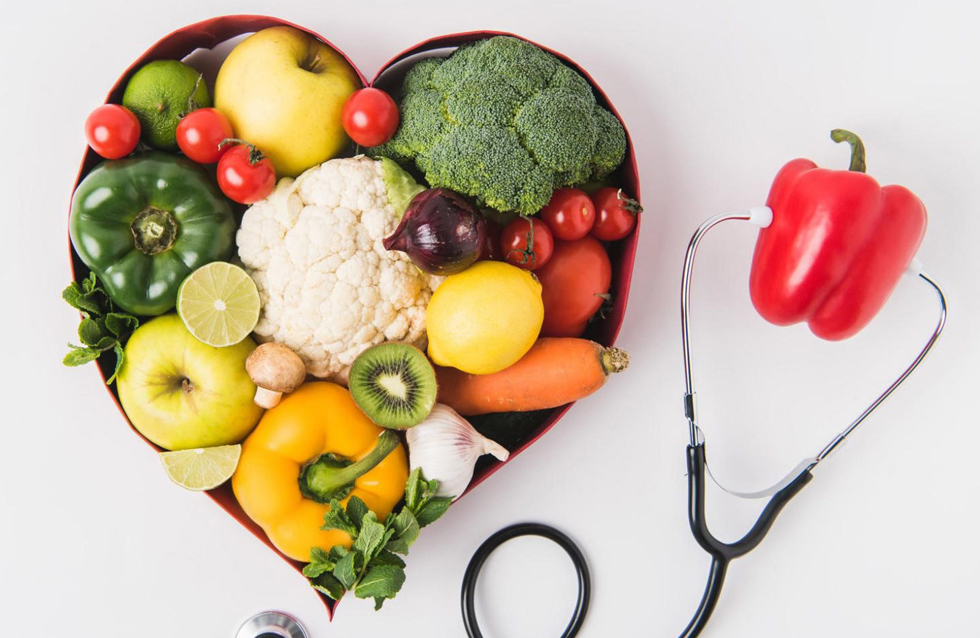
Produce prescription programs enable doctors to prescribe fruits and vegetables in addition to medications. Patients receive electronic cards or vouchers to access free or discounted produce of their choice at retail grocery or farmers’ markets, explained study lead author Kurt Hager, Ph.D., M.S., an instructor at UMass Chan Medical School in Worcester, Massachusetts.
Although previous research has examined the effects of small, individual produce prescription programs, this analysis is believed to be the largest produce prescription study by pooling data from nine programs across the U.S. to assess health outcomes after about six months.
“We know that food insecurity impacts health through several important pathways, including overall dietary quality, but also through stress and anxiety, mental health and tradeoffs between paying for food and other basic needs such as housing costs, utilities and medications,” said Hager, who completed these analyses while a doctoral student at the Friedman School of Nutrition Science and Policy at Tufts University in Boston. “These results indicate produce prescriptions may lay an important foundation for improved health and well-being.”
Study participants received a median of $63 per month to purchase produce at local stores and farmers markets. In addition, participants attended nutrition classes. At the beginning and after completing the program — which ranged from 4 to 10 months — participants completed questionnaires about fruit and vegetable consumption, food insecurity and health status. Routine testing of blood pressure; weight and height; and hemoglobin A1c (HbA1c) -a measure of blood sugar — was completed at enrollment and at the conclusion of the program. The study did not include a control group and compared outcomes among participants before and after program participation.
The analysis of all participants found:
Adults reported that their intake of fruits and vegetables increased by nearly one cup per day (0.85 cups per day). Among children, intake of fruits and vegetables increased by about a quarter of a cup per day (0.26 cups per day).
Systolic blood pressure — blood pressure during heartbeats — decreased more than 8 millimeters of mercury (mm Hg); while diastolic blood pressure — blood pressure between heartbeats — decreased nearly 5 mm Hg among adults who had high blood pressure at enrollment in the study.
Blood sugar, as measured by HbA1C levels, decreased by 0.29 to 0.58 percentage points among adults with diabetes.
BMI significantly improved, with a reduction of 0.52 kilograms per square meter (kg/m2) among adults with obesity. Among children, however, BMI did not change.
Adults were 62% more likely and children were more than twice as likely to report better health status by program completion.
Overall, participants were one-third less likely to report food insecurity after completing the programs compared to before the programs.
“Poor nutrition and nutrition insecurity are major drivers of chronic disease globally, including cardiometabolic conditions like Type 2 diabetes and their cardiovascular consequences, including heart failure, heart attack and stroke,” according to Mitchell Elkind, M.D., M.S., FAHA, chief clinical science officer of the American Heart Association and a tenured professor of neurology and epidemiology at Columbia University. “This analysis of produce prescription programs illustrates the potential of subsidized produce prescriptions to increase consumption of nutritious fruits and vegetables, reduce food insecurity and, hopefully, improve subjective and objective health measures. Future research will need to include randomized controlled trials to offset any potential bias and prove more rigorously the benefits of produce prescription programs. The American Heart Association’s new Food Is Medicine Initiative will be focused on supporting such trials.”
The Food is Medicine Initiative, announced in September 2022 by the American Heart Association and The Rockefeller Foundation — at a White House Conference on Hunger, Nutrition and Health — seeks to ensure patients receive medical prescriptions for healthy food to help prevent and manage chronic disease.
Advertisement:
Poor nutrition plays a major role in serious long-term illness, including cardiovascular disease and Type 2 diabetes, according to a 2022 American Heart Association Policy Statement: Strengthening U.S. Food Policies and Programs to Promote Equity in Nutrition Security.
In 2019 alone, poor nutrition contributed to nearly 8 million deaths, according to the Association’s statistics. Food insecurity is the lack of equitable and stable availability, access, affordability to foods and beverages that promote well-being and prevent and treat disease.
Study details:
The analysis included 1,817 children and 2,064 adults enrolled in one of nine produce prescription programs operated by the non-profit organization, Wholesome Wave, from 2014-2020. The programs were administered at 22 sites in low-income communities in 12 U.S. states.
All program participants had or were at risk for developing heart disease or Type 2 diabetes and either had food-insecurity or were enrolled at a clinic serving a predominantly low-income neighborhood.
The average age of adult participants was 54 years old; 71% were women, 30% were white adults, 45% were Black adults, 21 percent were Hispanic adults and 4% of adults’ race / ethnicity was classified as “other.”
Children in the study were an average age of 9-years-old; about half were girls, 9% were white children, 13% were Black children, 76% were Hispanic children and 2% of children’s race/ ethnicity was classified as “other.” Nearly two-thirds of child participants were enrolled in the federal Supplemental Nutrition Assistance Program (SNAP).
At the onset of the study’s, more than half of the households in the study reported experiencing food insecurity.
The analysis had several limitations, including the lack of a control group for comparison; high rates of missing survey data for food insecurity and fruit and vegetable intake data at the end of some programs; and the effect of the COVID-19 pandemic on programs that started during that period.